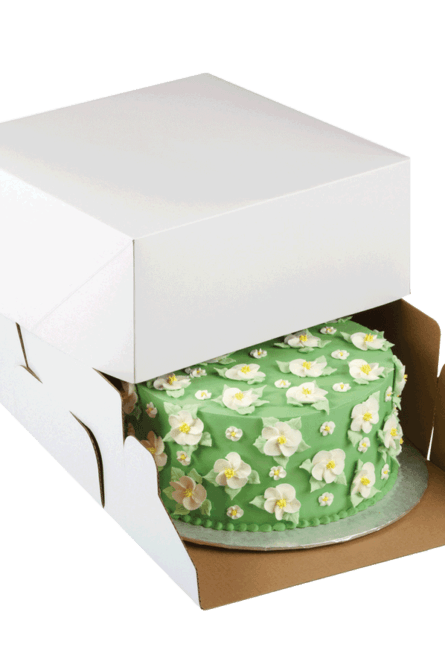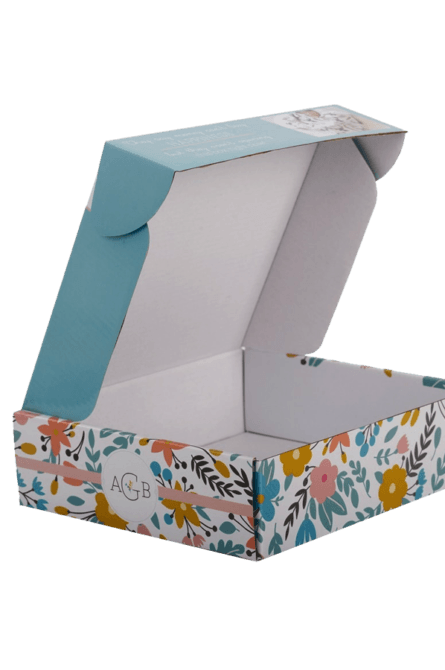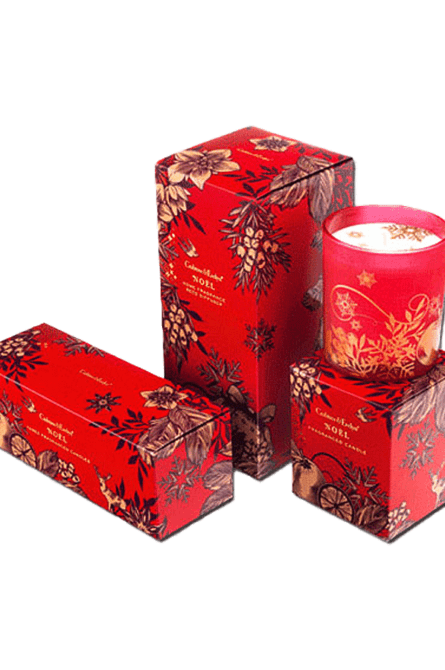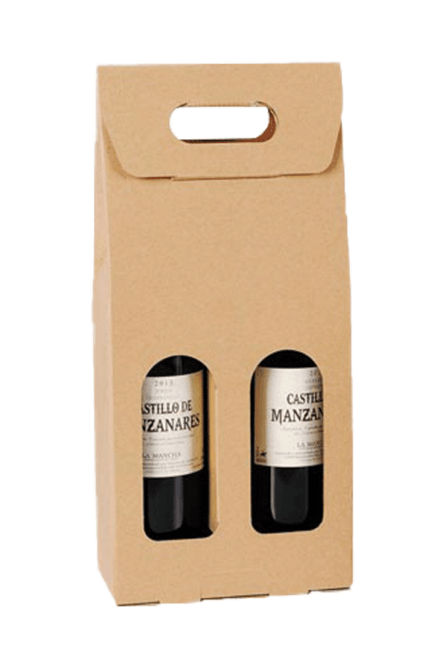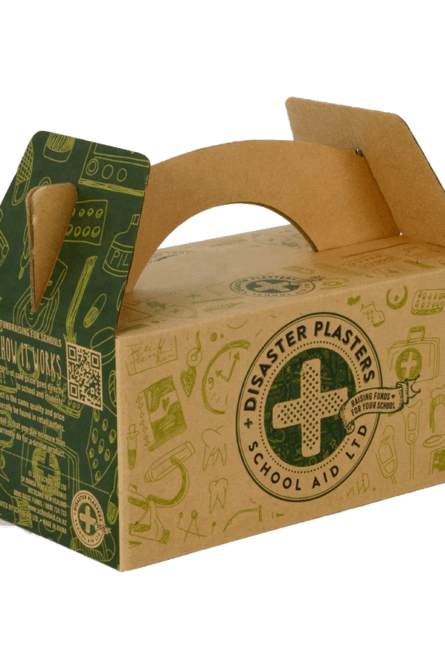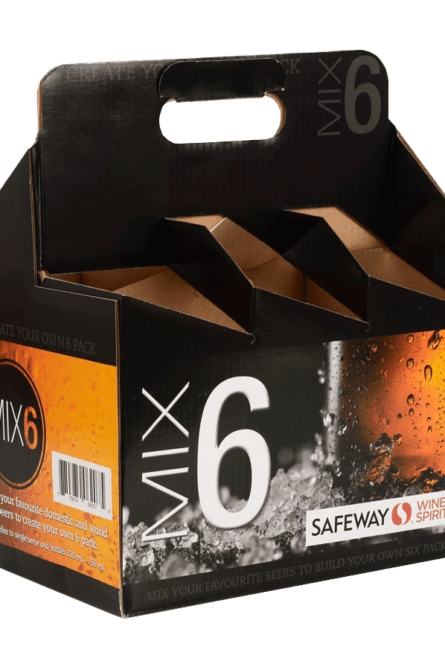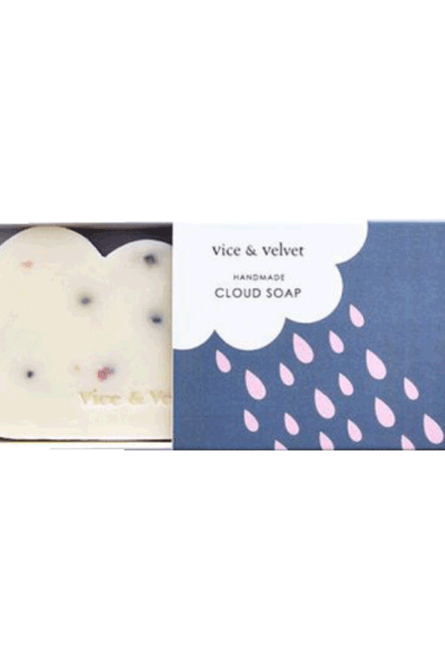17

By: Monica Harper
Cereal box dimensions are the unique length, width, and height measures that characterize a particular cereal box’s physical form. Packaging design, usefulness, shelf space optimization, and transport all benefit greatly from these measurements. Manufacturers and designers can better fit the product and arrange it attractively on shop shelves if they have appropriate box dimensions to work with. A front of a cereal box should be designed with these measurements in mind to maximize consistency across branding, nutrition facts, and user experience.
Ultimately, custom box dimensions are important for developing packaging that maintains the contents, conveys information, and engages customers in a pleasing and useful way.
Understanding Box Dimensions And Their Importance
The first step in the quest is to figure out why the size of a cereal box matters. These dimensions affect more than just appearances; they also affect shelf-life, transportation costs, and customer opinion. Furthermore, you can make better packaging options after you understand the significance of dimensions.
Standard Cereal Box Sizes And Their Variations
Look at the variety of sizes available in boxes, from single-serving to family-sized selections. Dig into the subsets inside each group to see how the varying sizes serve different markets and advertising aims. Get to know about our standard cereal box sizes.
Choosing The Perfect Height, Width, And Depth
Height, breadth, and depth deciphering is a must. We investigate the elements, such as cereal form, density, and packaging, that affect these measurements. You can better serve your brand and your customers by making educated judgments when you have a firm grasp of these factors.
What Is Length – Beyond The First Impression
The branding potential and shelf presence of a cereal box are closely related to its length. The longer the box, the more room there is for eye-catching artwork and helpful nutrition facts, but the shorter the box, the easier it will be to find on the shelf.
We break down the artistic possibilities and practical implications of various durations to give you the tools you need to make choices that will connect with your audience.
What Is Width – Balancing Space And Aesthetics
The attraction and use of a top of cereal box are both impacted by its breadth. While a smaller box makes the most efficient use of shelf space, a broader one allows for the display of more colorful artwork and classy patterns. We explore the intersection of form and function to help you find the sweet spot that elevates the appeal of your packaging.
What Is A Cereal Box Height – Tantalizing The Senses
The customer’s perspective is greatly impacted by the cereal box height. Some custom packaging boxes are shorter for the sake of portability and stackability, while others are taller to attract attention and give the impression of higher quality.
We help you understand how the height of a cereal box affects the senses and choose proportions that work with your brand’s statement and the kind of connection you want from consumers. Therefore, cereal box dimensions are an essential part of package design, since they must harmoniously balance form and function. Learning the ins and outs of length, breadth, and height will allow you to design a size of a cereal box that will not only keep your cereal safe but will also draw in customers and set you apart from the competition.
This manual will help you make choices that improve the box experience as a whole, whether you’re going for eye-catching aesthetics, optimal shelf placement, or tactile interest.
How Tall Is A Cereal Box?
Do you know how tall is a box of cereal? Let’s dive in below!
Cereal boxes can vary in height and width depending on a number of things such as the brand’s preferences, the packaging design, and the cereal being packed. However, the normal cereal box sold in grocery stores is between 8 and 12 inches (20 and 30 cm) tall, and its depth can range from around 2 to 3 inches (5 to 7.5 cm). The optimal product display, storage efficiency, and user-friendliness are all achieved with these measurements. Specialty or limited edition cereal boxes can vary in size from the norm to provide consumers with more engaging displays.
Manufacturers and designers consider branding, shelf space, convenience of use, and overall aesthetic appeal when settling on the precise height and thickness for a back of a cereal box.
What To Look For When Making Dimensions Of A Cereal Box?
There are several important considerations to keep in mind when designing the dimensions of a cereal box, all of which affect the usability, aesthetics, and overall customer experience. The exact measurements for a cereal box are as follows, with explanations:
- Quantity And Size Of The Product
It’s ideal if the cereal box’s proportions match those of the cereal itself and the amount included. In addition, making sure everything fits snugly reduces the chance of harm from shifting around while in transport or storage.
- Shelf Space Optimization
Examine the store shelf space that is currently available. It’s important to maximize exposure without wasting shelf space, therefore the measurements should find a happy medium between sticking out and fitting in with similar items.
- Graphics And Packaging Design
The proportions must work in tandem with the other visual elements of the package. Enticing graphics, branding features, nutritional information, and other relevant imagery communicating the core of the product must be given enough real estate.
- Consumer Convenience
Usability is crucial. Cereal boxes should design such that opening, pouring, and closing are all simple tasks. Think about the consumer’s comfort when designing the package, and include features like easy-grip edges and accessible openings.
- Structural Integrity
The box’s integrity must be preserved by the dimensions used. Boxes, particularly bigger ones, need to have a good balance of height and breadth to avoid toppling over. The wall thickness must be sufficient to ensure the box’s longevity without adding unnecessary mass.
- Consumer Perception
Think about how different aspects affect consumers’ minds. A box’s height might suggest plenty, while its width and depth can signify moderation or distinction.
- Shipping And Storage
Storage and transport efficiency are essential. The dimensions should be such that there is little wasted space in shipping containers and simple stacking is possible for both transit and storage.
- Unboxing Experience
The unpacking process is enhanced by the included dimensions. Customers are more likely to be pleased with their purchase as a whole if they anticipate and enjoy the moment of unveiling the item thanks to appropriately sized packaging.
- Regulatory Requirements
Sizes, legibility of information, and portion control are all areas where legislation and industry requirements must be met.
- Market Trends
Maintain a keen awareness of the market and customer tastes. Change the measurements so that they fit in with current trends in packaging that are popular with your market.
Cereal box design, in essence, is create a striking balance between form and function, branding and practicality. You can design cereal packaging that protects the cereal inside, attracts customers, and sets your brand apart from the competition by giving careful consideration to the aforementioned elements.
What Factors Influence The Height And Width Of Dimensions Of A Box Of Cereal?
Factors such as product size, package aesthetics, branding necessities, and customer convenience all play a role in determining the ideal dimensions of a box of cereal.
The height and breadth are proportional to the amount of cereal within while yet allowing for prominent displays of marketing materials and nutritional facts. The optimal proportions that maximize both usefulness and aesthetic appeal depend on a number of factors, including shelf space efficiency, shipping concerns, and customer ergonomics.
How Do Cereal Box Dimensions Impact Shelf Display?
Size matters when it comes to cereal boxes on store shelves. The optimal proportions let the box stand out from the crowd while making the most of its shelf real estate.
Height and breadth affect how noticeable a package is, helping to draw in customers and convey the essential nature of the product in a single look. Having boxes that are the right size also helps stores maintain an appealing and well-organized shelf design.
Why Is The Unboxing Experience Affected By Cereal Box Dimensions?
These boxes have a big impact on the unpacking experience, setting the tone for the consumer’s feelings and anticipation before they ever open the box. Accurate sizing adds to the thrill of opening a box of cereal for the first time. Customers are more satisfied with a purchase when the box is easy to open and the product inside looks as good as it does on the packaging.
How Can Cereal Box Dimensions Impact Portion Control?
The size of a box of cereal affects portion management since it dictates how many servings can contain inside the packaging. To get people to eat the appropriate serving sizes, several brands have started making their products smaller. On the other hand, greater sizes can convey a sense of plenty and appeal to those who like more substantial servings.
Why Is Material Efficiency Important In A Cereal Box?
Cereal box proportions should prioritize material efficiency to reduce waste and promote greener alternatives. Manufacturers can cut down on the cost of raw materials by optimizing the dimensions. Material efficiency not only helps keep manufacturing costs down but also helps achieve environmental objectives by lowering the carbon footprint.
What Impact Do Cereal Box Dimensions Have On Transportation And Storage?
The difficulties of moving and storing cereal depend heavily on their packaging size. The more efficient the proportions, the less money will be spent on transportation, and the less room will be needed in the warehouse. Having boxes that are stackable and snugly fit into shipping containers improves the effectiveness of the supply chain and speeds up delivery.
How Do Cereal Box Dimensions Affect Consumer Perception?
Consumers’ impressions of a cereal brand can shape by the packaging. The perception of high quality and plenty can communicate via taller boxes, whereas portion restriction or novelty might be suggested through more compact packaging.
This strong strategy for changing customer perception relies on the dimensions’ ability to elicit certain emotional reactions and impact purchase choices.
What Is The Average Size Of A Cereal Box?
Generally speaking, the dimensions of a common cereal box are somewhere between:
- About 20 to 30 centimeters, or 8 to 12 inches, in length.
- About 5 to 7.5 centimeters (2 to 2 inches) in width.
- A cereal box has dimensions of 12 inches and 14 inches (30 and 35 cm) in height.
These measurements allow for optimal product display, branding, and use of available shelf space. It’s worth noting that the order of dimensions of a box, especially limited-edition varieties or those aimed at niche demographics, can stray from these norms to provide consumers with a more memorable buying experience.
What Is The Average Weight Of The Cereal Box?
Several variables, including the cereal’s kind, the packaging materials used, and the amount of cereal within, might affect the typical weight of a cereal box. But as a rule of thumb, most cereal boxes usually weigh around:
Net Weight: Approximately 8 to 16 ounces (225 to 450 grams)
These are only rough averages, and the actual weights can vary widely from one cereal brand to another and from one kind of packaging to another. Some cereal boxes, especially those that are specialty items or very big, can have greater net weights than others. The total weight of a cereal box includes not just the cereal itself but also the weight of the box it came in.
How To Evaluate Cereal Box Measurements Properly?

The packing, shipping, and stocking processes for cereal rely on cereal box measurements of the boxes. A bulleted list of instructions for accurately measuring cereal boxes follows.
- Length Measurements Of A Box
- The measurements of a box should be set down on a level surface.
- Put the measuring tape down the longest side of the box, from one end to the other.
- Put the number of inches or centimeters next to the measurement.
- Widths Of A Cereal Box
- Put the measuring tape at right angles to the direction you want to go with the length.
- Measure the width of a cereal box by laying the tape measure flat from one end to the other.
- Put the number of inches or centimeters next to the measurement.
- Height Measurements
- Put the cereal box on its end, the longest side up.
- Roll out the ruler and measure the whole box, bottom to lid.
- Put the number of inches or centimeters next to the measurement.
- Thickness/Depth Measurement
- Keep the tape measure level with the width being measured.
- Position the tape measure at one end of the custom packaging box and calculate the distance to the other end.
- Put the number of inches or centimeters next to the measurement.
- Internal Dimensions
- If necessary, measure the length, breadth, and height of the entrance to the box from the inside to ensure everything fits.
- Include Packaging Thickness
- Be sure to account for the thickness of the box while taking measurements.
- Accuracy Matters
Box fit, product protection, and general design can all be negatively affected by even a centimeter off in the measuring department.
- Consider Packaging Design
Don’t forget to add in any closures, extra features, or design details that might change the overall size. If you follow these procedures, you can be sure that your box measurements will be correct, leading to packaging that fits well, protects the food well, and improves the customer experience.
Why Is Cereal Packaged In Rectangular Boxes?
Cereal is often packaged in rectangular boxes due to their practicality and efficient use of shelf space. The shape allows for easy stacking and storage on store shelves and in homes. Rectangular boxes are also convenient for pouring and accessing the contents.
Additionally, the flat sides of the boxes provide ample space for branding and nutritional information, making them an ideal choice for packaging breakfast cereals.
Possibilities For A Cereal Box Size
For a cereal box size ranges from little to extra-large to accommodate a wide range of tastes and storage requirements. The following are common dimensions for cereal boxes:
- Small Single-Serve Boxes: Cereal sold in small, single-serve boxes is convenient for those on the move since each box contains only one serving.
- Standard Family Size Cereal Box Dimensions: These family size cereal box dimensions packaging are a favorite since they are the perfect size for single meals or sharing with the family. They include plenty of room for logos and text.
- Large Economy Boxes: Intended for families looking to save money, these boxes include a great quantity of cereal for a reasonable price.
- Specialty or Limited-Edition Boxes: Specialty or limited-edition boxes come in a variety of sizes to provide customers with one-of-a-kind packaging adventures or to coordinate with certain marketing initiatives.
- Variety Pack Boxes: Cereal lovers can now buy “variety packs,” which include many smaller boxes of cereal in a variety of tastes and varieties.
- Custom-Shaped Boxes: Uniquely shaped boxes can create to complement the logo or subject of a cereal, making it stand out from the crowd on store shelves.
- Compact Storage Boxes: Boxes for storing bagged cereals are typically compact in size since they are designed to fit neatly on kitchen shelves.
Bulk or Wholesale Boxes: Cereal in large quantities, perfect for commercial usage, is available in bulk or wholesale cartons. Manufacturers can efficiently address the varying demands of their target markets by offering a broad variety of sizes of cereal box, reflecting customer preferences, marketing tactics, and packaging requirements.
Cereal Box Sizes- Define In Inches
Cereal box sizes provide a variety of alternatives to accommodate varying product volumes and customer preferences. Here are some popular cereal box size choices described in inches:
- Small Single Serving: Approximately 5 x 1.5 x 7 inches (Length x Width x Height)
- Average Cereal Box Size: Around 6 x 2.5 x 8 inches (Length x Width x Height)
- Family Size Cereal Box: Typically, 7 x 3 x 10 inches (Length x Width x Height)
- Large Family Size: About 8 x 3.5 x 12 inches (Length x Width x Height)
- Standard Cereal Box Size: Generally, 9 x 4 x 14 inches (Length x Width x Height)
Cereal businesses can better meet the diverse packaging demands of consumers by using this range of options. Keep in mind that these sizing choices can shift significantly depending on the products on sale and any cereal box design template that can have been implemented.
What Materials Are Used For Custom Cereal Boxes?
Different materials for making custom cereal boxes have their own advantages in terms of longevity, sustainability, and visual appeal.
Cereal boxes can be made from a variety of materials, including:
- Cardboard Boxes
Cardboard can serve many purposes and is inexpensive. Its flat, colorfast surface makes it perfect for displaying elaborate logos and other printed artwork. Cardboard cereal boxes provide enough security and can use with a wide variety of cereals.
- Corrugated Boxes
Due to its fluted inner layer, corrugated material provides an additional buffer against impact. Strong and durable, it can withstand the weight of even the heaviest cereal boxes and the wear and tear of transporting huge volumes. In addition, cereal boxes manufactured from corrugated cardboard are often used for large quantities sold at once.
- Kraft Packaging
The earth-friendly, rustic look of Kraft paper makes it a popular choice. Because it can easily recycle and decompose, it’s a great option for eco-conscious companies.
Cereal boxes prepared from Kraft paperboard have a natural, unprocessed look that appeals to health-conscious shoppers.
- Rigid boxes
Rigid boxes give off an air of sophistication and refinement. They’re built to last and look stylish while doing so. Rigid cereal boxes are often used for high-end or limited-edition items because they make the unwrapping experience stand out. Brands can tailor their packaging depending on criteria like branding, product protection, environmental aims, and financial constraints because of the versatility of the available packaging materials.
How To Know The Proper Size For Each Side Of A Cereal Packaging Box?
Cereal box-sizing is a methodical process that requires careful consideration of factors including consistency, usefulness, and aesthetics. The procedure is outlined below.
- Define Length, Width, And Height
Find out how big you want the cereal box to be first. Measure your available shelf space, determine your packaging needs, and think about your logo while deciding on the length, breadth, and height.
- Consider Proportions
Make sure there is an equal amount of emphasis on both sides. For instance, the width should go well with the length, and the height should work well with the overall proportions so that the whole thing seems balanced and put together.
- Choose Flaps And Closures
Be careful to account for any flaps or closures on the cereal packaging box when measuring the side lengths. All of these factors contribute to the box’s ability to seal tightly and keep its contents safe.
- Allow For Barcodes And Labels
Make room for labels, barcodes, and QR codes. Put them where customers can quickly scan them and get the information they need while shopping.
- Graphics And Artwork
Make sure there is enough room on either side of the box for the elaborate designs and artwork. Graphics should improve the package as a whole without making it difficult to understand.
- Ergonomics And User Experience
When deciding on the average size of a cereal box, keep user interaction in mind. Design dimensions that facilitate easy opening and reclosing for a seamless consumer experience.
- Packaging Material Thickness
Remember to include the thickness of the box in your measurements. In this way, the exterior dimensions will accurately reflect the amount of usable space inside the container.
- Prototype And Test
Build a model of the box, either digitally or physically, to see whether it works as planned. Put the prototype through its paces by putting it together and using it to see what tweaks are required.
How Big Is A Box Of Cereal?
A standard box of cereal typically measures around 7.5 inches in height, 2.5 inches in width, and 11 inches in length. However, sizes can vary between brands and types of cereal. Always refer to the packaging for precise measurements before purchasing.
How Many Ounces In A Cereal Box?
The number of ounces in a cereal box can vary widely depending on the brand, type of cereal, and package size. Cereal boxes typically come in various sizes, such as 8 ounces, 12 ounces, 16 ounces (1 pound), and larger. It’s important to check the specific packaging of the cereal box you’re referring to in order to determine the exact number of ounces it contains.
Closing Remark
The dimensions of a cereal box are more than just numbers in the world of package design; they are the core of what makes the product interesting and useful to the buyer. These factors include the creative touches that define your brand’s personality, the analytical considerations that ensure maximum shelf presence, and the pragmatic decisions that safeguard and promote sales. As you set out on the process of designing the specifications for a cereal box, keep in mind that each specification is a component of a greater jigsaw, one that must bring together form and function without sacrificing sustainability. The care and creativity that goes into each package speak volumes about your company and improve the experience your customers have with your goods.
So, let your cereal box dimensions be a reflection of your brand’s ingenuity, an invitation to explore, and a promise of delight to those who open the box – for within those dimensions lies the promise of a memorable and satisfying cereal experience. So, if you want further information about cereal boxes, look no further than Packaging Bee. We are always here to guide you 24/7.



